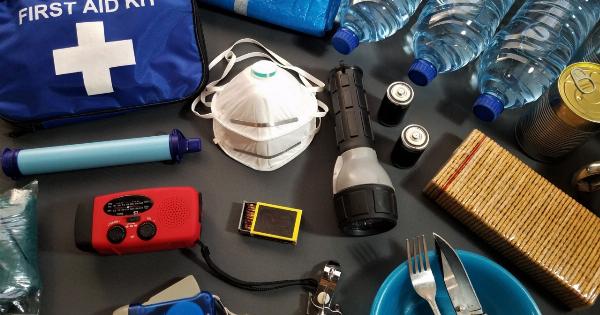The microwave oven has become a staple appliance in many households around the world, providing convenience and quick cooking solutions. However, there has been ongoing speculation about the potential health risks associated with using a microwave oven.
In this article, we will explore these concerns and provide an evidence-based analysis of whether there are indeed health risks involved.
The Microwave Technology
Before we delve into the potential health risks, it is important to understand how a microwave oven works. Microwave ovens use electromagnetic radiation in the form of microwaves to heat food.
These microwaves cause the water molecules in food to vibrate rapidly, resulting in heat production and cooking of the food.
Electromagnetic Radiation
One of the primary concerns regarding microwave ovens is the potential exposure to electromagnetic radiation. However, it is crucial to differentiate between ionizing and non-ionizing radiation.
Microwave ovens utilize non-ionizing radiation, which differs significantly from the ionizing radiation emitted by sources like X-rays and nuclear reactors.
Microwave Safety Standards
To ensure consumer safety, microwave ovens are subject to strict safety standards and regulations set by regulatory authorities such as the Food and Drug Administration (FDA) in the United States.
These regulations limit the amount of electromagnetic radiation that can leak from a microwave oven and have been established to prevent any adverse health effects.
Leakage and Shielding
While microwave ovens are designed to prevent radiation leakage, it is possible for some leakage to occur over time or due to damage.
However, it is important to note that the level of leakage from a properly maintained microwave oven is minimal and falls well below the safety limits established by regulatory authorities. Moreover, most microwaves are equipped with shielding that prevents radiation from escaping the oven during operation.
Effects on Nutrient Content
Another concern often raised regarding microwave ovens is their potential to diminish the nutritional value of food. It is believed that the rapid heating process of microwaving can destroy essential nutrients.
However, numerous studies have indicated that microwaving food actually retains more nutrients compared to other cooking methods.
Effect on Plastic Containers
There have been concerns about the safety of using plastic containers in microwave ovens. Certain types of plastic containers may release harmful chemicals when exposed to heat, which can potentially contaminate food.
It is recommended to use microwave-safe containers and avoid using plastic containers that are cracked or damaged.
Microwaving and Cancer
One of the most controversial subjects surrounding microwave oven use is its potential link to cancer development. Various rumors and myths have suggested that microwaving food can lead to the formation of carcinogens and increase the risk of cancer.
However, extensive research conducted by reputable organizations such as the World Health Organization (WHO) and FDA has found no credible evidence supporting these claims.
Precautionary Measures
Although using a microwave oven is generally considered safe, it is advisable to follow certain precautionary measures:.
- Avoid using damaged or cracked containers.
- Use microwave-safe materials such as glass or ceramic for heating food.
- Cover food with a microwave-safe lid or microwave-safe plastic wrap to prevent splatters.
- Follow the manufacturer’s instructions for proper usage and maintenance of the microwave oven.
Conclusion
After a thorough examination of the available evidence, it can be concluded that there are no significant health risks associated with using a microwave oven.
The non-ionizing radiation emitted by microwave ovens falls within safety limits, and the minimal leakage that may occur is considered safe. Microwave cooking can even preserve more nutrients compared to other cooking methods. However, it is important to take precautionary measures and use microwave-safe materials to ensure optimal safety and minimize any potential risks.






























